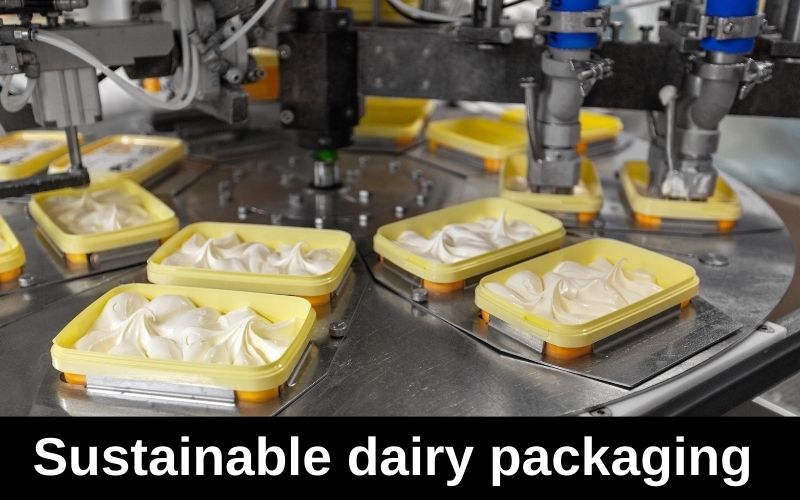
With inflation rates soaring higher than Blue Origin spacecraft, and the only thing going up being the cost of everything, we could all do with some savings. Companies are either reducing the weight of their products, Dairy Milk chocolate, Parle G biscuits, soap bars, and so on, almost everything weighs less and costs more, and the eventual pain of being born in hard times falls on poor customers.
It doesn’t get better, global supply chains are disrupted by war in Ukraine, which is also driving oil and natural gas prices through the stratosphere. In today’s climate, saving money and managing operation costs is not quite straightforward, and you may have to take a sideways look at how you can save on your operations. If you’re a supplier or producer of goods, perhaps assessing the choice of packaging materials for your products could provide you with an avenue for reducing cost and saving considerably.
By now you may already be thinking that your packaging is quite ideal, it keeps your goods safe while amply expressing your brand values, and reducing costs will mean brand dilution. While the packaging sells products for the first time, what’s inside sells them again, you can reduce packaging costs and maintain the integrity of your brand and products. You may not even have to change your choice of packaging, you could just switch over to methods that are faster and more cost effective.
Today, businesses spend inordinate sums of money filling cardboard boxes with attractive wrapping or personalised notes or fake straw from a plastic manger, or getting special package designs to create something “memorable” or “everlasting” for their customers. Reality check- the joy your customers will receive from the “memorable” unboxing experience will be fleeting at best, whereas the unrequited waste from your packaging will last for a long long time on the planet. You can always reconsider this or other excesses in your packaging and do away with them, all it takes is a little consideration.
1. Contain it better
It may seem challenging to find ways of reducing the cost of your packaging initially, however, you could try and begin with these starting points and work your way from there. Perhaps the most apparent and effective way to cut down on the cost of packaging is by changing the materials used for containing and packing your products. For instance, you can replace big jars with recyclable air tight flexible packaging that quantifiably reduces consumer food waste, impacts environment positively and even changes consumer attitudes and behaviour around food waste.
Flexible packaging systems extend the shelf life of various food items, and today, more consumers are interested in reducing waste and extending the shelf life of their food, but ironically most remain unaware of the benefits flexible packaging offers for doing this.
There are thousands of options to choose from, but you can always try and see how much heavier your present packaging is; and how it’s adding to logistical expenses, purchase pricing and shipping costs when compared to newer, lighter alternatives.
Estimates wager that a company can reduce costs by over seventy percent or more: if it can manage to shift from rigid to flexible packaging for its products. Ideally, you should look for a solution that requires less raw material and resources to produce, as well as one that weighs less, at the same time ensuring the packaging is adequate enough to provide the product protection and fulfil the expectations of your customers when it reaches them. You may be using plastic or glass bottles to package preserved food items or beverages, but you can reuse the price on every product and lessen shipping costs as well; by simply switching over to flexible pouches. These cost a fraction of rigid containers, ensure longer product life if they come with sealers or zip locks, weigh less and are convenient to store and dispose.
Naturally, the lighter the container, the more you can save on shipping costs and avoid breakage as flexible pouches will not shatter if they are dropped during transit. Shifting from rigid to flexible packaging not only helps save money, it also offers producers suppliers, and consumers a hassle free experience free of waste and spillage.
-
Reduce the density (Down Gauge) of your Packaging Materials
If you’re already using flexible film for packing your products, you could consider reducing the thickness of material used; it’s a terrific way to save money and cut down on packaging costs. To “down gauge” means lowering the thickness of the material from a higher level of thickness to a lower one. Many companies who package products with shrink film can cut costs by down gauging their films.
So many companies continues to use thicker than necessary shrink film for their packaging, and we have helped numerous partners save huge amounts of money by simply assessing their shrink packaging line and down gauging their film in case their products can indeed be packaged just as well using a a lower gauge of film. Quite a lot of companies have made the switch to new film wrapping that simply requires lesser material to be made, leading to to lesser wastage, reduced costs on every package, and ideally, cost savings for the consumer.
Even if your products require rigid plastic packaging, you can cut down on the amount of plastic that is used for making bottles. This can also serve as a middle ground on the way towards solving the plastic crisis: if we can’t stop the use of plastic altogether, we can surely try and use as less of it, till we fine a conclusive solution (of which there are many). Major beverage producers bottle their products using considerably lesser plastic than they did ten or twenty years ago, but they are still some distance away from adopting sustainable and flexible packaging which would do away with the need for plastic altogether.
By down gauging, the amount of energy consumed for producing your packaging material will also be reduced, which will translate to better environmental outcomes, greener manufacturing, and lesser energy consumption.
Switching over to lesser density packaging film does not require new technology, international consultants, major upgrades, or technical know how, it just takes a couple of hours before you begin to save; big. However, there are certainly many products that just can’t be down-gauged; it could in fact become problematic. You can always reach out and consult a packaging expert first.
-
Minimal Packaging for low cost
In a global market constantly disrupted by lapses in supply chains, it’s getting incredibly difficult to procure all components that go into making products, and marketing them: this applies across the board. On the other hand, companies are trying harder to gain customers than ever before, spending major bucks on creating new products or introducing more attractive packaging. Fortunately, there are a number of brands and consumers who have begun shifting towards minimal packaging or minimalist packaging, where simplicity and elegance replace excess and waste. Conscious customers will also prefer minimalist packaging because it is usually produced using better practices compared to other packaging options available today.
Isn’t it a thing of wonder why iPhones cost so much yet come in the simplest box you’ll ever find? It’s an iconic example of minimalist packaging, yet the decision for choosing this packaging also came down to cost savings. In order to fend off competition and justify itself, Apple couldn’t afford to price its phones any higher than it did, and saving on packaging solved a huge problem for the company. Apple didn’t load up the box inside either, keeping weight low as well, saving on costs, again.
Many companies over-package their products, which takes more time, money, and resources. Usually, tea brands make a good case, there will be a rigid paperboard box in which wax sealed paper will host the tea bags, which are made of another packaging material. Also, the entire tea box must have come wrapped up in something, right?
Companies can save huge sums of money by cutting down the materials used per package, utilise minimalist packaging, and simplifying designs. Every packaging line is unique and reviewing how it works may provide new insight into saving, perhaps a change in assembly line, changes to equipment, source of materials, and other related packaging processes may help with savings. To help yourself get a clearer picture of what you can do to reduce packaging costs, we get in touch with a packaging expert, who will take a closer look at your specific packaging dynamics, and recommend changes that will be to your benefit.
Top 10 Packaging Ideas for eCommerce



Leave a comment